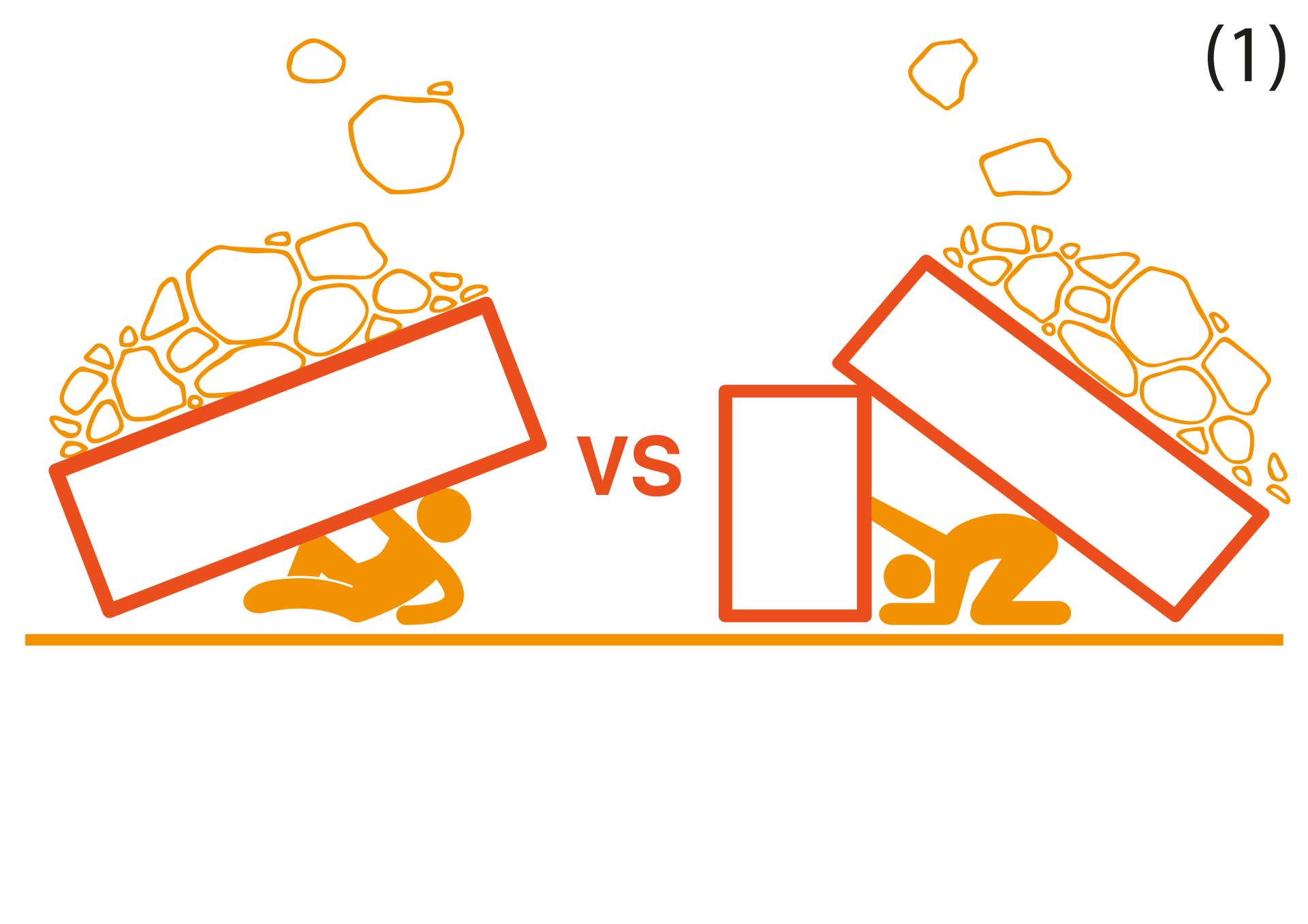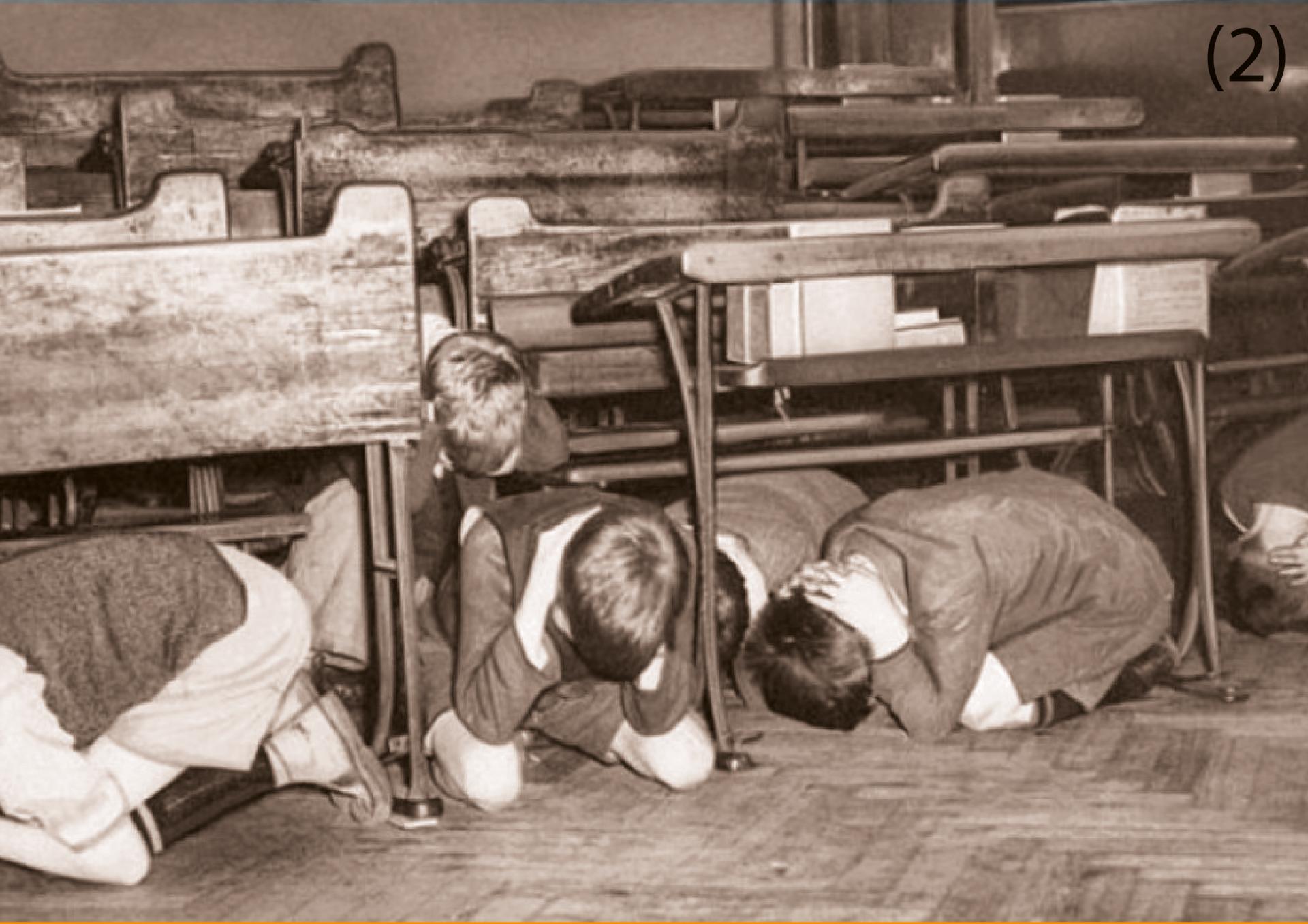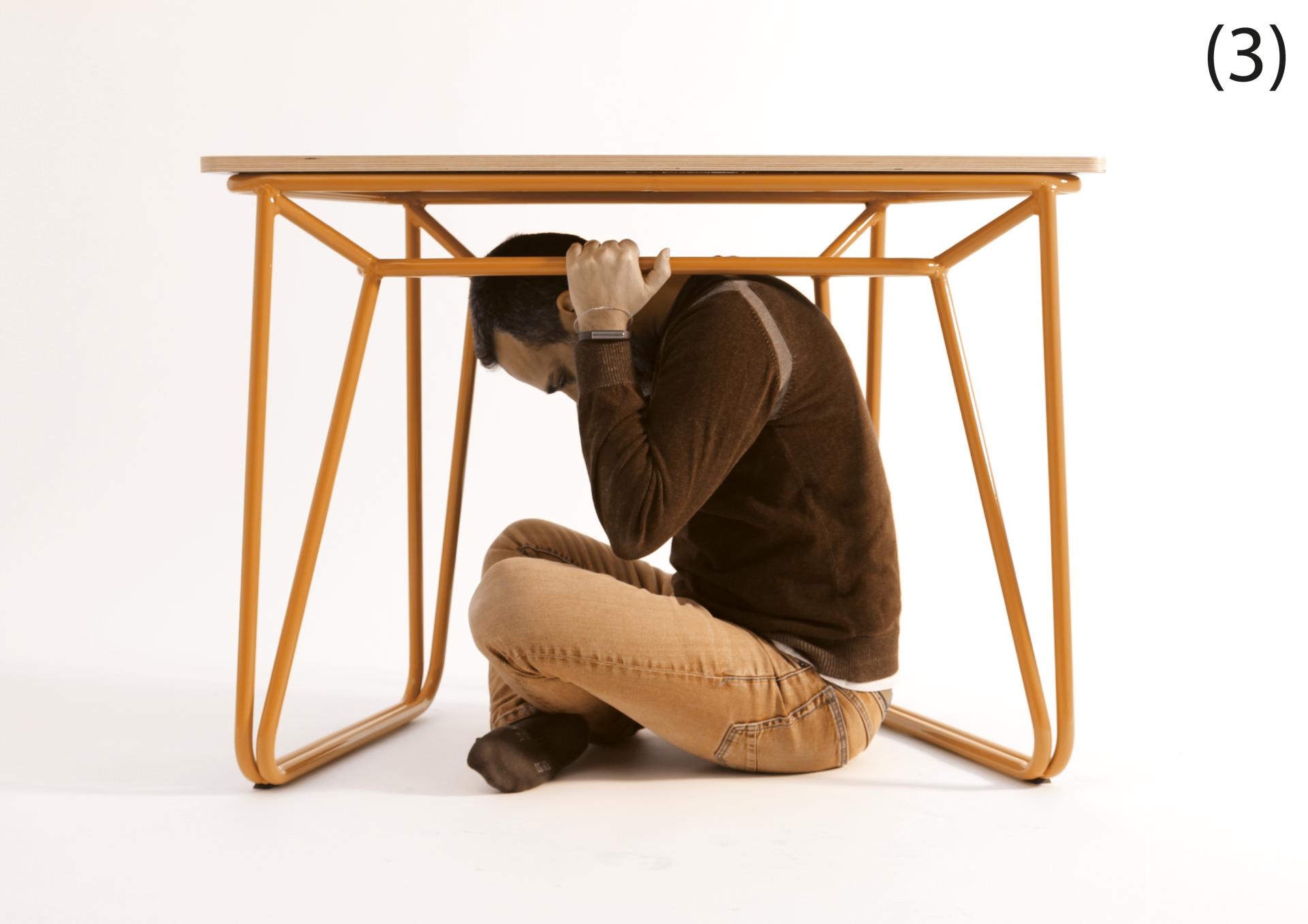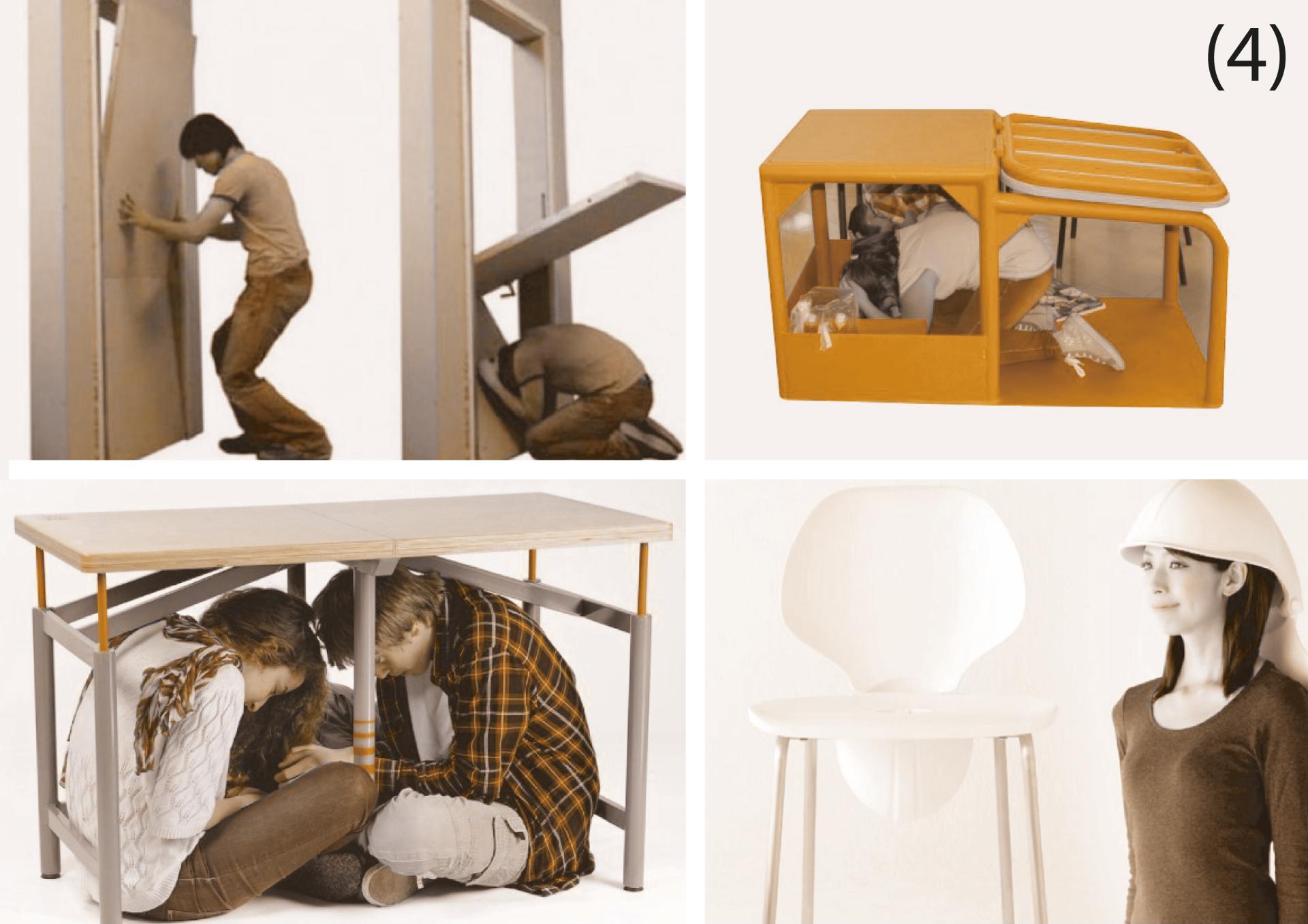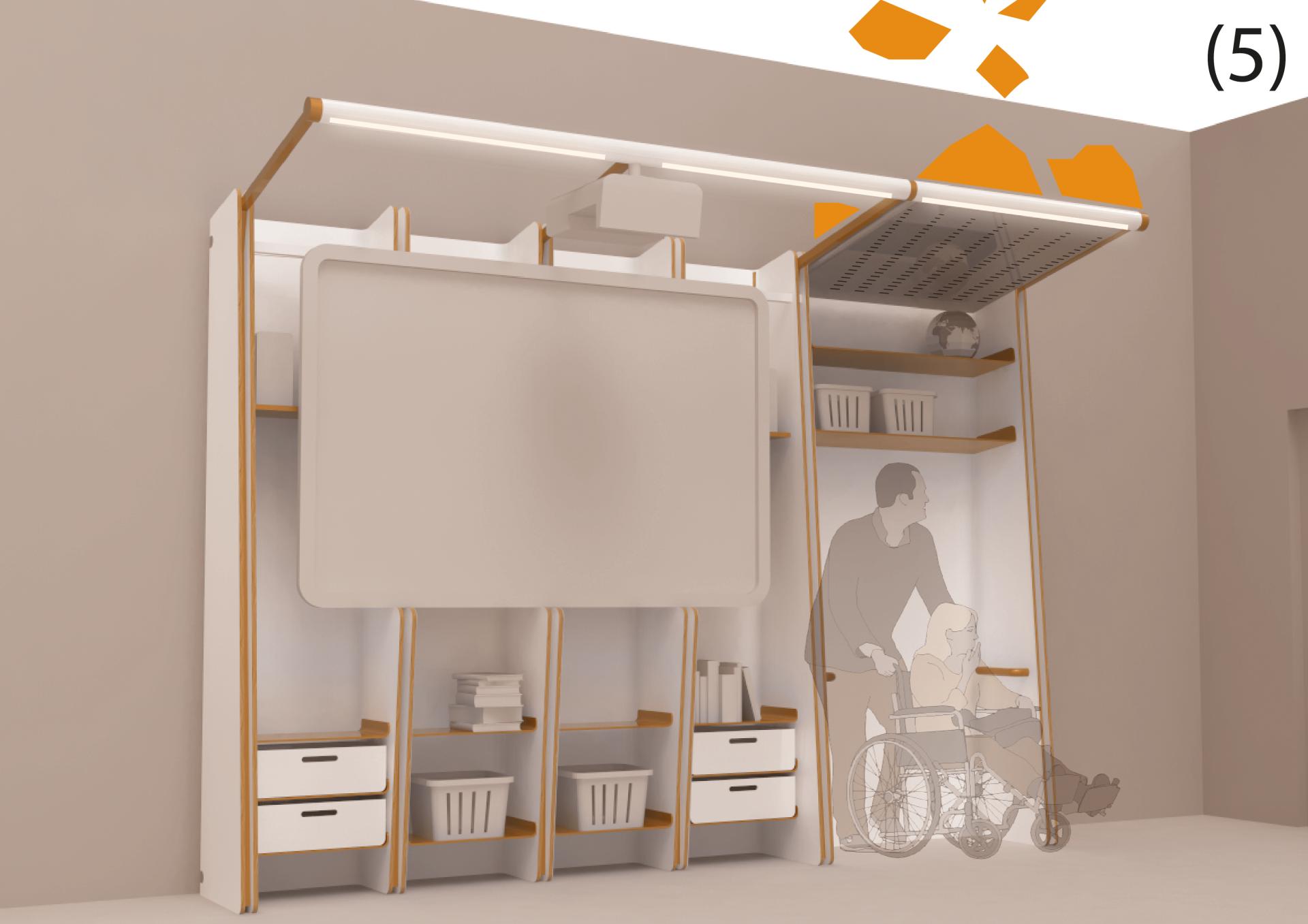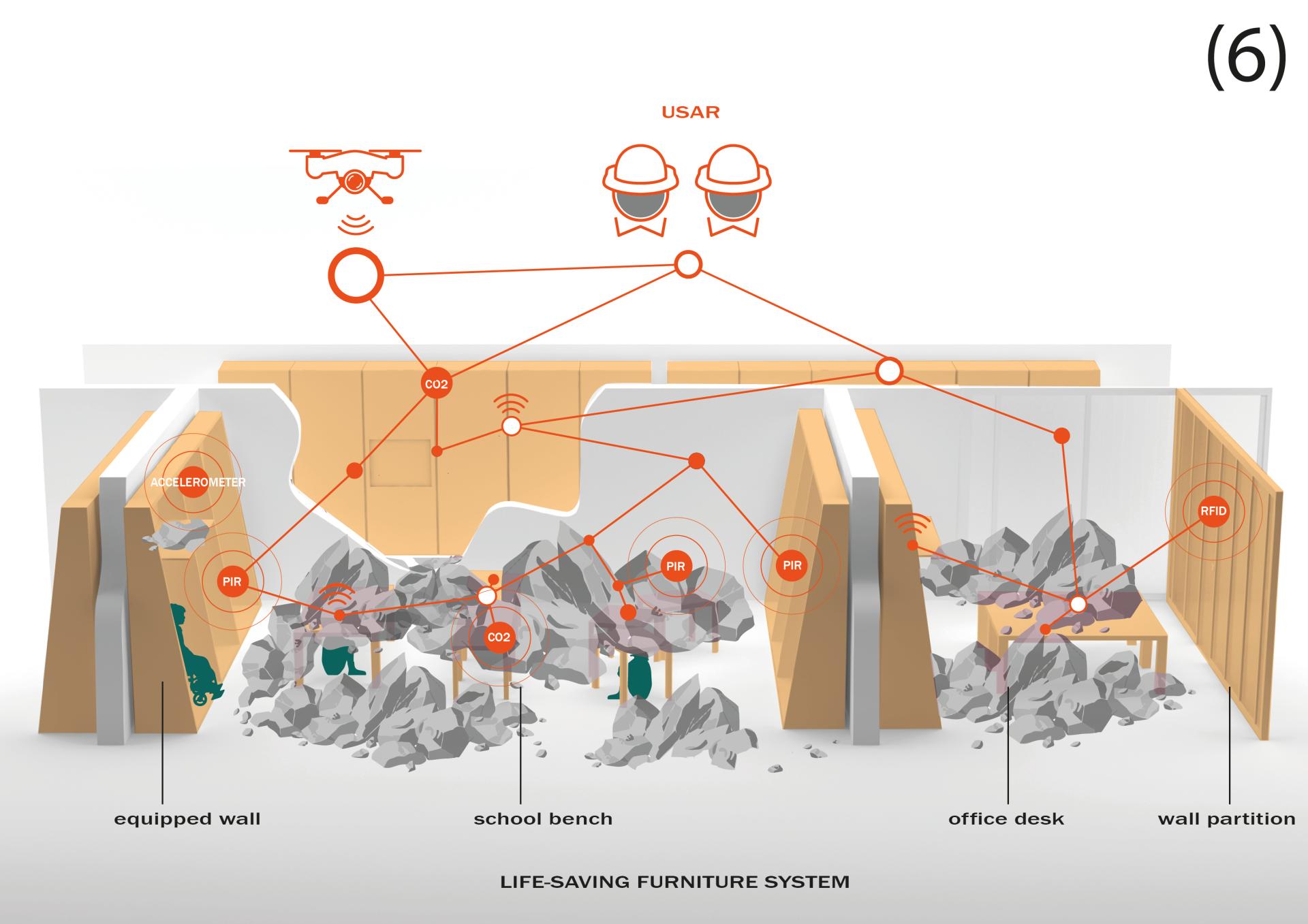S.A.F.E.
Basic information
Project Title
Full project title
Category
Project Description
During an earthquake, mobile systems, furnishings and equipment, that set up the environments, can either become obstacles and barriers that aggravate the danger conditions - or, conversely, represent a possibility of salvation in case of collapse.The project S.A.F.E., has been aimed at project development and implementation of “anti-seismic" systems, smart and "life-saving" furniture in case of earthquake, for schools and offices.
Project Region
EU Programme or fund
Which funds
Other Funds
"PON"- National Operational Program - MIUR
Industrial Research Project and not predominantly Experimental Development
Specialization Area "Design, Creativity and Made in Italy", 2018.
Description of the project
Summary
During an earthquake, furnishings and equipment, that set up the environments, can either become obstacles and barriers that aggravate the dangerous conditions - or, conversely, represent a possibility of salvation in case of collapse (image 1). The life-saving behavior depends on how these products are designed.
The project “S.A.F.E.” intends to study and develop concrete and effective solutions in response to the growing demand of social safety in everyday life, strongly emerged after the recent seismic events that have affected the Center of Italy, by integrating technical and scientific knowledge and skills, different and complementary, such as Design, Structural Engineering and Computer Science. In particular, the project S.A.F.E., is aimed at project development and implementation of “anti-seismic" systems, smart and "life-saving" furniture in case of an earthquake, for schools and offices (image 2).
The challenge for scientific, technological and industrial research has been to innovate, under a structural perspective, the design of furniture that are used in the schools and offices and transform them in smart passive-safety systems that can contribute to the protection of life through the integration of sensors for management, localization and retrieval of people in the event of an earthquake. Through a multidisciplinary technical-scientific approach to the innovation and the sharing of different know-how within the public-private partnership involved in the project, has been developed a new furniture system for safer schools, especially in building contexts vulnerable to the earthquake, such as schools in historic centers. The core of the furniture system consists of a new concept of an anti-seismic school desk, a new concept of equipped wall and partition wall. Each concept works as a single protection unit and through mechanical and digital interconnection systems can generate a life-saving system able to increase the level of protection for the school.
Key objectives for sustainability
Through the analysis of the state of the art of life-saving furniture products developed to date, it was observed that most of these involved the excessive use of materials, especially steel, making them not very adaptable in various indoor contexts, especially in the buildings of the historic centers. This intensive use of steel generates very heavy and environmentally unsustainable furniture. Otherwise, the S.A.F.E. products have adopted as a self-protection strategy in case of an earthquake, the development of new lightweight geometries with high mechanical strength, able to significantly reducing the use of materials and resources.For example, the school desk (image 3) has a frame with high mechanical resistance but light at the same time (15 times lighter than some anti-seismic benches described in the state of the art) so as not to aggravate the transport phase and remain with the weights of traditional models.
Key objectives for aesthetics and quality
Through a multidisciplinary and multisectoral approach, which has involved different disciplinary areas and manufacturing companies in the wood-furniture sector, it has been possible to develop an identified system of life-saving furniture for the school context. One of the objectives of the project was to generate furnishing concepts for building contexts vulnerable to earthquakes able to performing both traditional functions and personal protection in the event of an emergency. Therefore the furnishings have been developed to be suitable for the context of use, using materials and finishes typical of the school sector, to be in family-line and designed so as not to look like typical products of building safety with risk to create states of anxiety in the users. The design and revision activities with school furniture companies were fundamental to define the aesthetic and functional aspects of these new life-saving furniture concepts.
Key objectives for inclusion
One of the major problems identified in the state of the art of earthquake protection products (image 4) is that no life-saving solutions have been developed for people with particular disabilities. The S.A.F.E. project has investigated new performance aspects of inclusiveness for this furniture specialized in self-protection. In particular, one of the modules of the S.A.F.E equipped wall was developed to guarantee protection from the earthquake for students with motor disabilities. In fact, in addition to avoiding the possible overturning of the masonry walls, the new concept of the equipped wall has a module consisting of a shelter resistant to vertical loads and structural failures, where the disabled student finds shelter and protection space in the event of an earthquake emergency (image 5).
Results in relation to category
The project S.A.F.E. has created socio-economic and technical-scientific benefits and value, for all the involved partners, public (Universities) and private (Enterprises), with the innovative results generated by the industrial research. The main impact of the project is the increase of economic development and competitive edge of one of the major distinctive manufacturing sectors of "Made in Italy”, the Legno-Arredo sector of the regions “in transition” (Abruzzo) and those of the South Italy (Puglia, Campania, Calabria). This result is linked to the process of the product’s innovation, realized in the project, through cross-fertilization actions with both technical-scientific and technological skills. Moreover, the integration of the distinctive know-how of the traditional furnishing companies in the "Made in Italy" industry and of the technology of ICT and IoT companies, can produce more innovative effects than the immediate industrial application, with long-term benefits, such as the transfer of the collaborative model to other business actions of the companies involved, in line with the strategic development goals, national and European, transforming traditional manufacturing into an innovative and evolved production system. In summary, these expected results will, for the partner companies, be translated into new high value added products to be introduced into: the public supply and contract office market; an increase in employment (a total of 10 new employees, 6 within R&D); increased spending on R&D (+ 2.5%); realization of patents for furniture products with "life-saving" functions in case of an earthquake (total of 5 new patents).
How Citizens benefit
To maximize the socio-economic impact of the project and the benefits for the whole partnership, during and after the industrial research, some measures, for the enhancement of the results, have been planned, including: the presentation to a wide audience of the project results, through meetings in the different regions involved; the presentation of the set of technical-performance requirements of anti-seismic furniture systems, together with the structural test set and related test procedures, defined into the project, to the national technical committees, responsible for the development of standards and technical regulations; the introduction of new products for schools and offices to stakeholder groups, potential users (P.A., Civil Protection, etc.) and the presentation of final prototypes at a nationwide event. In the dissemination activities of the results it was possible to directly involve both the school administrators present in the seismically critical regions and some heads of the Italian Civil Protection department. The seminars and check-lists organized and addressed to the school context and to the Civil Protection were useful to frame the earthquake problem in schools and at the same time to better define the design requirements. Their involvement was fundamental to generate the new furniture solutions specialized in protecting the lives of students and teachers in the event of an earthquake.
Innovative character
The elements of innovation are many: the new furniture are conceived as systems that work in a synergistic and interconnected way, and not as individual decorative units; the design, developed from a structural perspective, does not just increase the performance of mechanical strength of the components and the use of more resilient materials, but it also develops new structural, technical and productive solutions of operation and use of the furniture, which maximizes the anti-seismic efficiency, improving also the consolidated technical specifications of products through new performances, in terms of health and sustainability of the environment; the new furniture also integrates innovative ICT and IoT technologies solutions (image 6), which, through a sensor system and the development of a special data management platform, will let the furniture behave before, during and after an earthquake, as "Smart Objects", able to detect and process data and translate them into signals and useful information for both users and rescuers. In particular, the most significant and original project results, useful and usable far beyond the conclusion of the proposed industrial research, are: a set of specific technical-productive requirements for school and office furniture that function as "life-saving" in case the of an earthquake; the support guidelines for the design of anti-seismic furniture; a set of structural tests, specific testing procedures and technical verification, to validate the types of furniture for schools and offices, to be submitted to the technical committees responsible for the development of new technical and standard regulations on "anti-seismic furniture".

